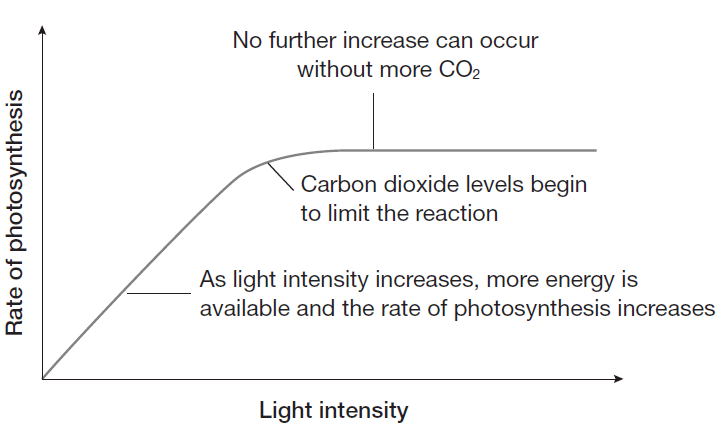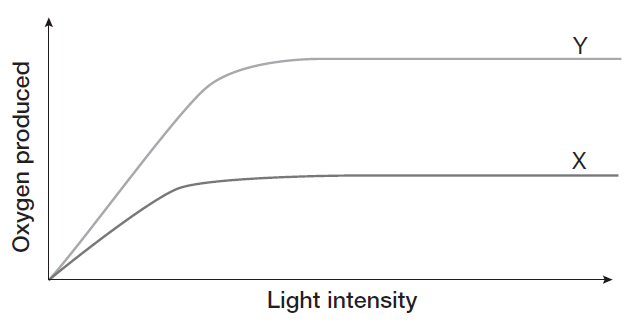
Read the following text and answer the questions below.
As the chemical equation below show, carbon dioxide and water have to be present before photosynthesis can take place.

The speed (rate) of most chemical reactions increases as the temperature increases. This is true of photosynthesis too, but only up to a point.The rate of photosynthesis increases until the temperature reaches about 30°C. At this temperature, photosynthesis decreases and then stops.This is because the enzymes that help photosynthesis along are destroyed at temperatures greater than 30°C. Above 30°C the enzymes can no longer function.
Questions
(a) reactants
(b) products
Recall photosynthesis by writing its:
(a) word equation
(b) balanced chemical equation.
Identify the limiting factor that stops photosynthesis from proceeding at night.
Plants don't grow well in a drought.They may even die. Use your knowledge of photosynthesis to explain why this happens.
Most caves have no plants in them. Identify the limiting factors of this environment that would make it difficult for plants to grow there.
(b) Explain why photosynthesis stops above this temperature.
Compare lines X andY on the graph shown below.

Summarise what both lines on the graph show about photosynthesis as light intensity increases.
Discuss possible reasons for the difference in the lines.
Explain why the amount of oxygen produced is a good measure of the rate of photosynthesis taking place.